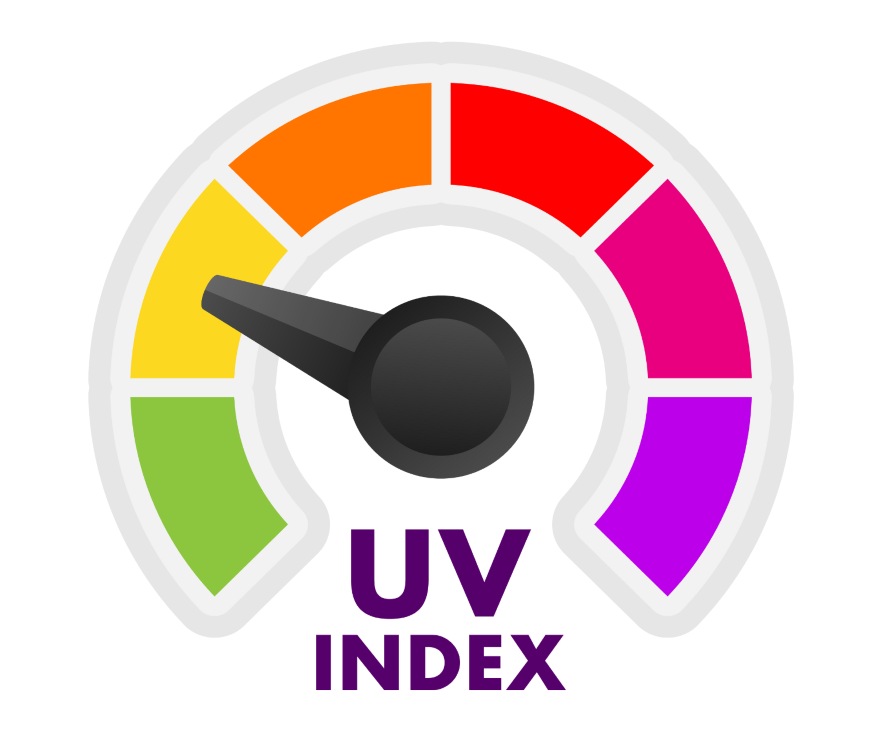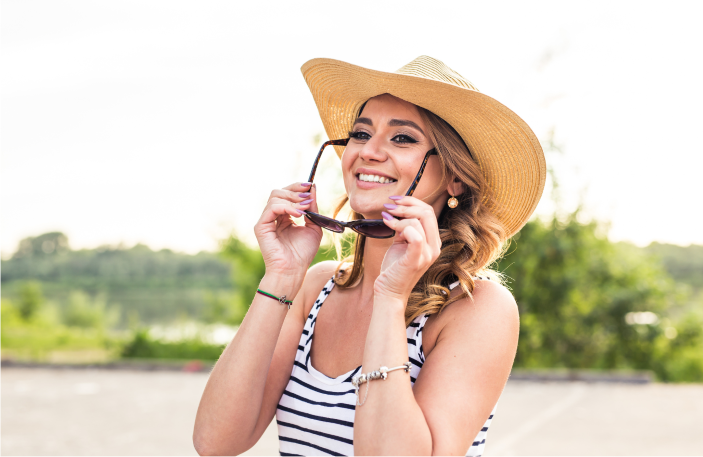Did you know that sunburns are the leading cause of skin cancers, including melanoma, the most serious form of skin cancer? All sun exposure, no matter your skin color, raises the risk for skin cancer. In fact, tan skin is a sign of sun damage. As we accumulate sun damage, we speed up the aging of our skin and increase the risk for skin cancer. Follow these tips to protect your skin from the sun’s ultraviolet (UV) rays.
- Be Shady: The sun’s rays are strongest from 10 a.m. to 4 p.m. Stay indoors or in the shade during these hours when possible. Plan indoor breaks and naps for kiddos when the sun is most intense. At the beach or sporting events, bring a large umbrella or pop up a shade tent. While trees provide relief and shade from the sun, they do not offer total protection.
- Grab your hat & sunglasses: Wear a wide-brimmed hat with a 2–3-inch brim all around to protect your face, head, scalp, ears and back of neck. You’ll find a good sun hat will also keep you cool. Make sure your sunglasses have UV protection to help prevent cataracts, macular degeneration and other eye conditions. Plus, the skin around the eye is very thin and prone to damage. The bigger the glasses, the better!
- Dress for the sun: Lightweight, long-sleeved shirts and pants are cool and comfortable on a sunny day. Try clothing and sun hats with UPF (Ultraviolet Protection Factor) ratings. Look for UPF 30 for good protection or UPF 50+ for excellent protection. A UPF 50+ shirt blocks 98% of UV rays while a plain white T-shirt has a UPF rating of 7. UPF swim shirts are a great option for children and adults for days at the pool, lake or on the boat!
- Choose broad spectrum SPF 30+: Dermatologists recommend lotions over sprays. Next, choose a broad-spectrum sunscreen to protect the skin from ultraviolet A (UVA) and ultraviolet B (UVB) rays. Both cause skin cancer. Then, choose SPF 30 or higher. Another option is water resistant for 40 minutes or very water resistant for 80 minutes. No sunscreen is waterproof or sweat proof. To protect the lips, use SPF 30 lip balm. If you have melasma or rosacea, always use mineral-based sunscreens that contain zinc oxide, titanium oxide or both. Tinted sunscreen provides protection against visible sunlight which can worsen any type of hyperpigmentation disorder including melasma.
- Squeeze, apply, repeat: Apply sunscreen to dry skin 15 minutes before heading outdoors. Don’t forget your ears and the tops of your hands and feet. How much? Most of us are not using enough! Most adults need about 2 tablespoons to cover the face, neck, arms and legs. If you’re in a bathing suit, more will be needed to evenly cover your back, shoulders and torso. Reapply every two hours, after swimming or sweating, even on a cloudy day.
What is the UV Index?

You can check the UV Index on your phone’s weather app. The UV (ultraviolet) index predicts the ultraviolet radiation levels of the sun on a 1 to 11+ scale. The higher the number, the faster your skin can be damaged and burned.
A UV Index level of 8-10 is very high and can cause sunburn in 15-25 minutes. The index can help you decide to use protection or avoid the sun from 11 a.m. to 3 p.m. Shade, sunscreen, hats and protective clothing are recommended starting at level 3-moderate. On a spring day in Minnesota, it can feel cool but the UV index can still be high. Keep an eye on the UVI!

